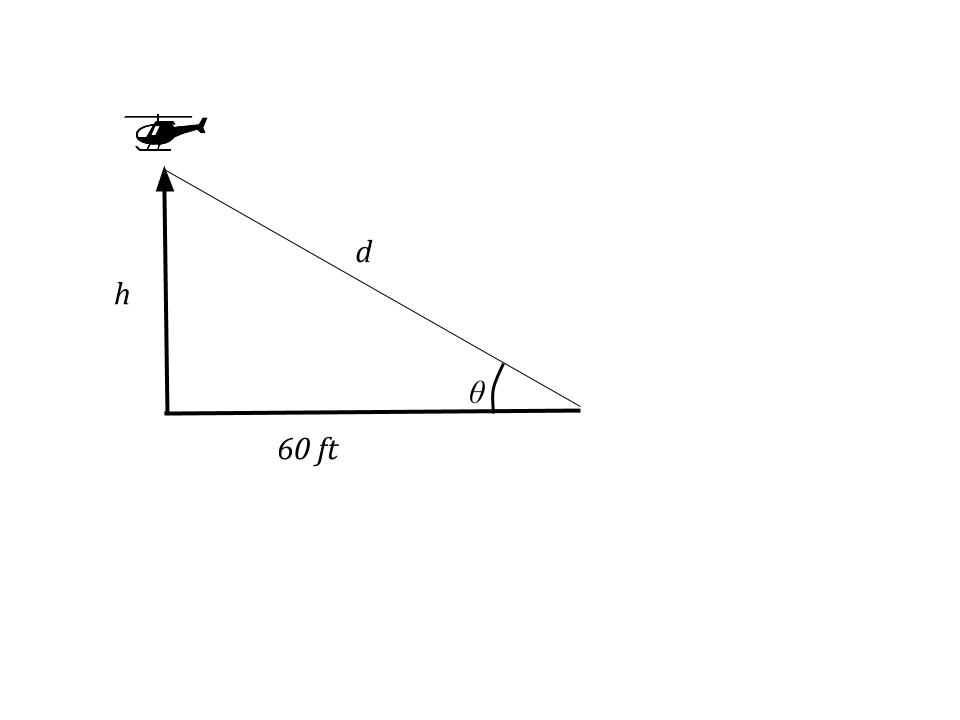A helicopter rises at the rate of 8 feet per second from a point on the ground 60 feet from an observer. How do you find the rate of change of the angle of elevation when the helicopter is 25 feet above the ground?
1 Answer
Explanation:

(Drawing above is not to scale)
We know that
First, make an equation using the information you have and the variables you want:
Now implicitly differentiate with respect to time:
Now isolate
Now substitute in values that we know:
To find
Now, continue simplifying the above equation:

